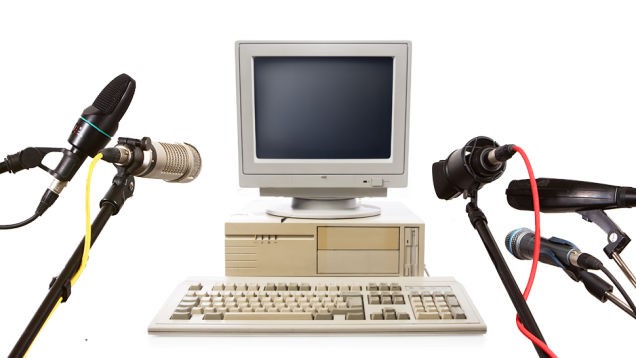
Long-distance communication has been rendered practically instantaneous by the Internet age; all it takes is a few clicks to send a file to the other side of the world or video chat with your buddy in Antarctica. But for all it’s worth, prolific digitization has made sharing things with the people right next to us somewhat cumbersome, requiring that we attach said item into an email or open up Dropbox, share folder access by entering someone’s email, and drop the item in — all in all, extremely clunky. Seeking to fix this problem, Google has published a Chrome extension that lets users audibly share URLs with other devices within microphone earshot.
Tone, as the extension is called, shares URLs by broadcasting a sound from your computer’s speaker that’s then detected by the microphones of other nearby computers who also have the app installed. In this fashion, you can send URLs to YouTube videos, articles, images, blog posts, and even Dropbox URLs to ready-to-download files will with a few beeps emanating from your speakers.
The extension was initially prototyped during an afternoon of tomfoolery, as is often commonplace on Friday afternoons at the Google Campus, but because it worked so well, the team responsible decided to fully-flesh it out as a finished product.
“The first version was built in an afternoon for fun (which resulted in numerous rickrolls), but we increasingly found ourselves using it to share documents with everyone in a meeting quickly, to exchange design files back and forth while collaborating on UI design, and to contribute relevant links without interrupting conversations.”
How does it work?
To arrive at the present configuration, Google’s engineers experimented with a variety of soundscapes, attempting to balance sound quality and efficiency. The initial prototype used an incredibly reliable audio transmission scheme, but it sounded “terrible” to the human ear. In response, the team played the transmission beyond the frequency range of human hearing, but because most microphones and video conferencing equipment are optimized for human voice, they could not detect the sound in this state alone. Opting to include a minimal DTMF-based audible codec significantly improved reliability for short distances, even at low volumes. DTMF, or dual-tone multi-frequency signaling, as you may recall, is an in-band telecommunication signal that generates two specific frequency tones when you press a specific touch key on the telephone.
Because Tone broadcasts sound, and sound waves cannot penetrate solid surfaces in much the same way that radio waves can, microphone orientation, the acoustic characteristics of the space, the speaker and microphone volume, as well as the user’s position in the room, all have an impact on Tone’s reliability. As such, users may occasionally find themselves having to tweak/debug the transmission by raising the volume, which is a small tradeoff to make considering that re-sending is as easy as re-clicking one button.
How to get started
Click here to snag the Tone extension for Chrome. Once it’s installed, simply open a tab with the URL you wish to share, raise the volume on your speakers, and press the Tone button that appears in the top section of the browser. A sequence of beeps will be emitted from your speaker that’s immediately picked up by nearby machines that also have Tone installed. It’s that easy.
Advertisement
Learn more about Electronic Products Magazine





